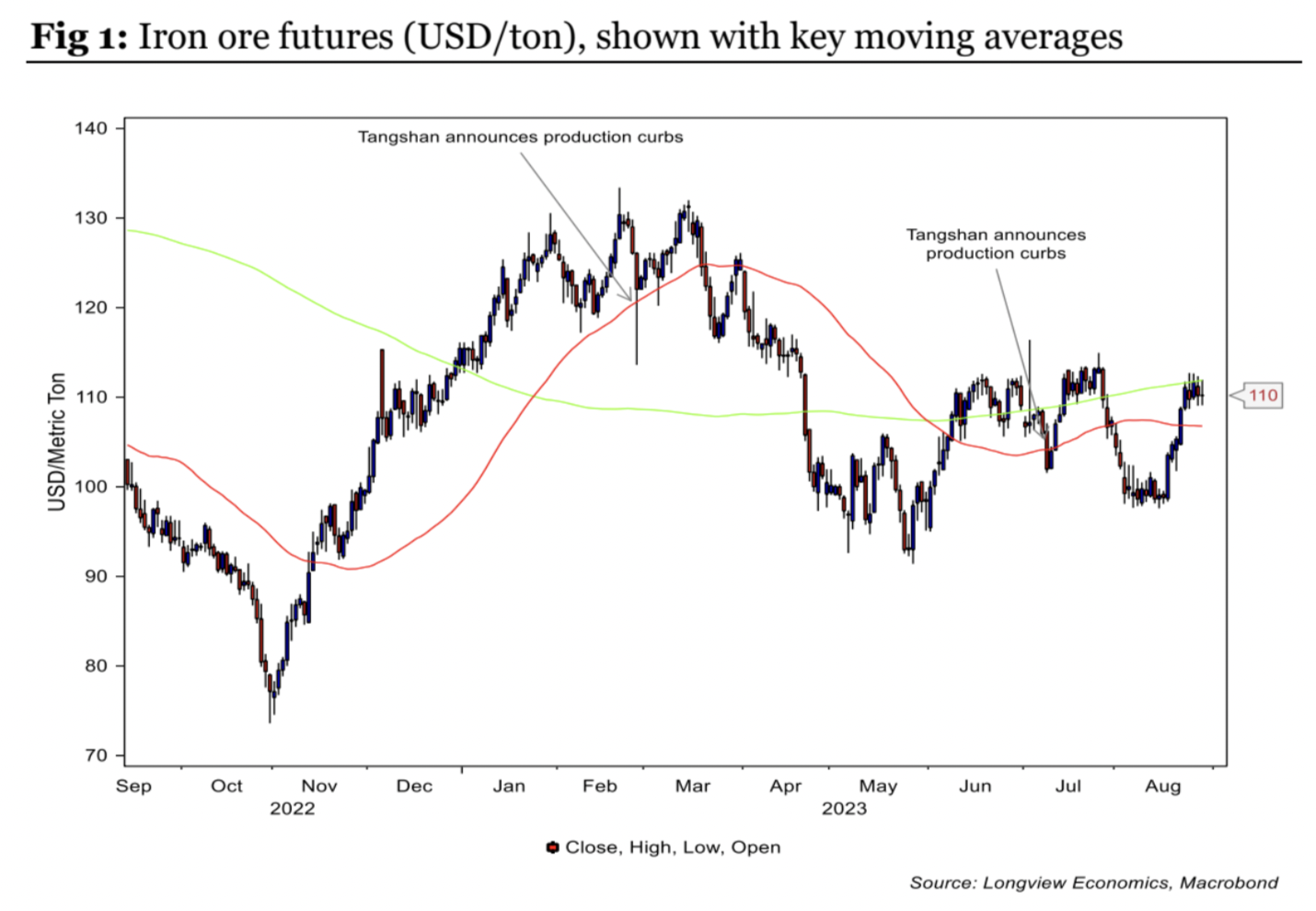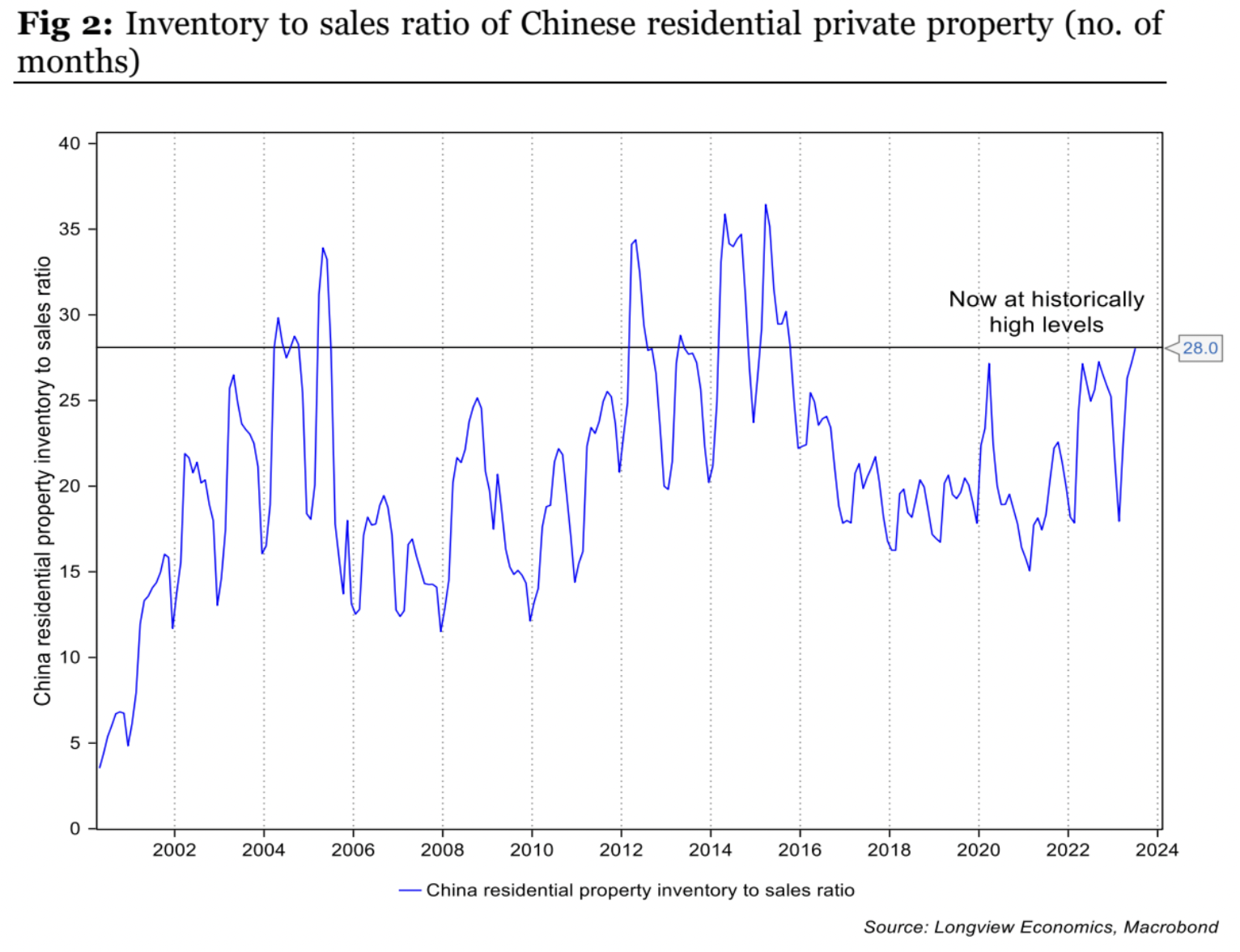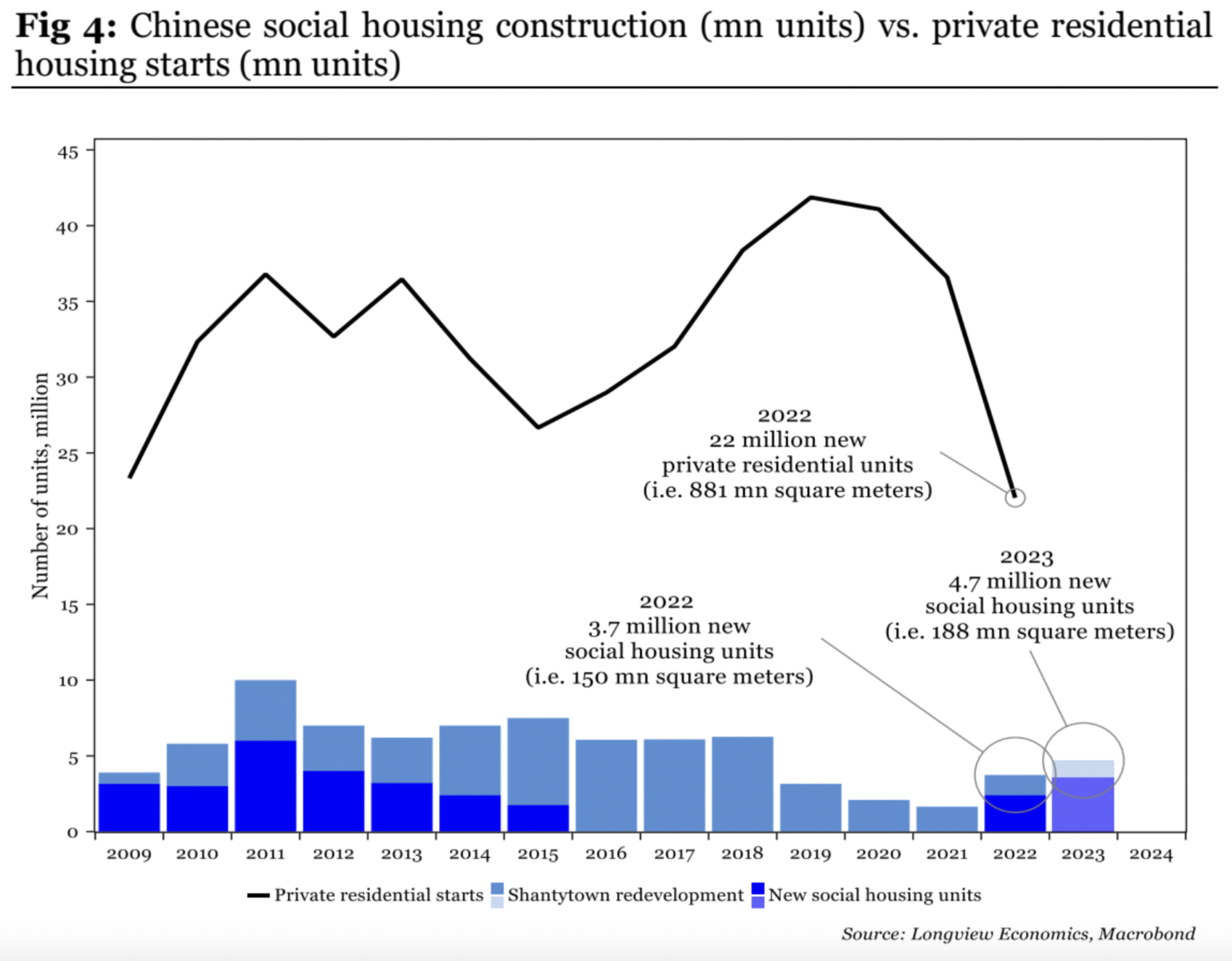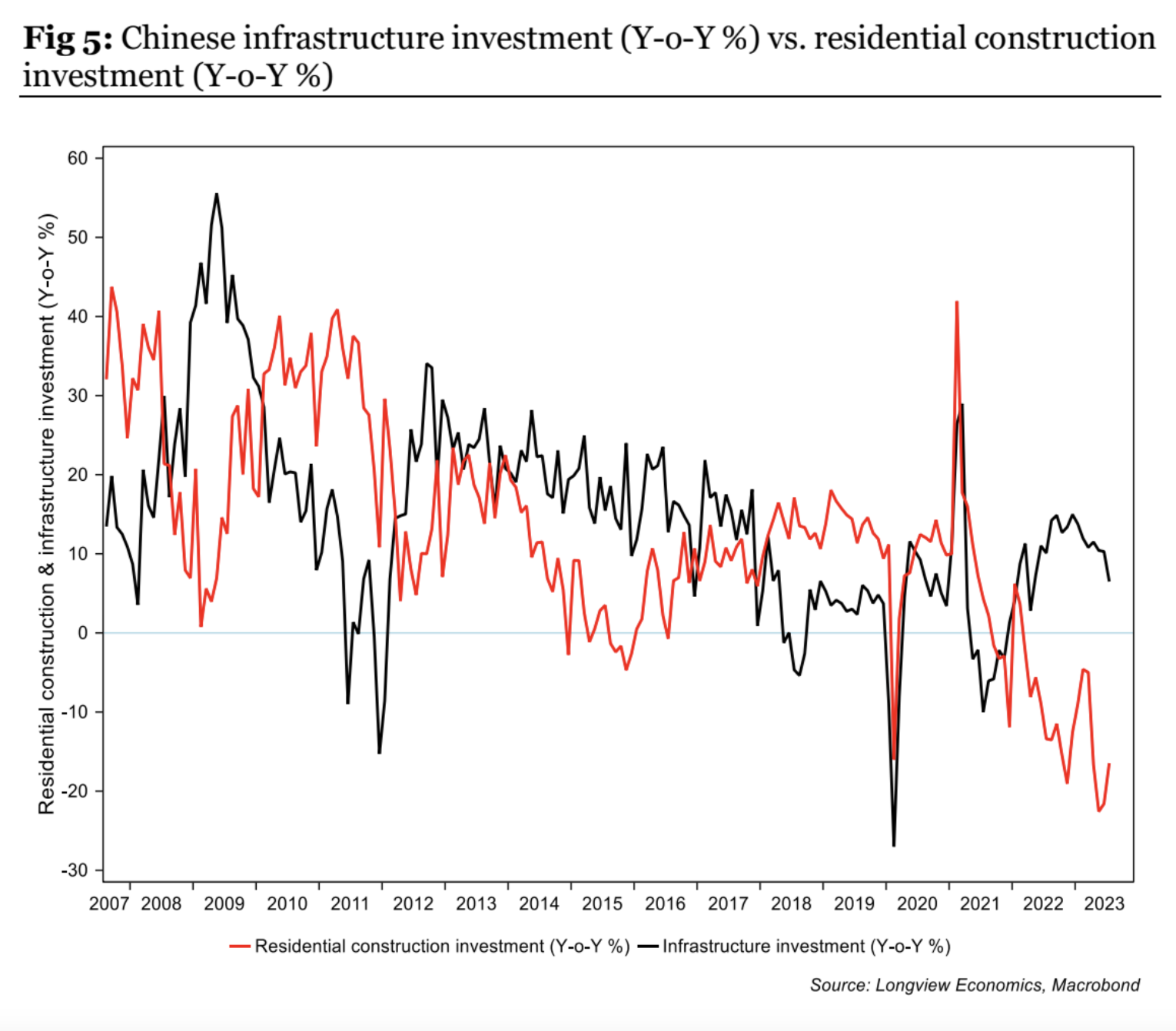3 reasons why we are bearish on iron ore
China’s property bubble has continued to collapse in recent months. Residential starts, for example, are back at their April lows, while transactions have sunk to a new 10-year low. There remains, though, a debate about the extent of further weakness.
Some expect a GFC 2008-style collapse, given that real estate accounts for approximately a third of Chinese GDP. Others have a more optimistic outlook, given the numerous stimulus measures implemented by Chinese officials in recent months (some of which we highlighted here).
Whichever answer is correct will directly impact China-sensitive commodities, such as iron ore. China accounts for over 50% of global iron ore demand, with 55% of Chinese iron ore demand coming from the construction sector. Indeed, the iron ore price is currently at a key juncture – having rallied up to its 200-day moving average over the past two weeks (fig 1).

In our view, and as we’ve highlighted in previous pieces (e.g. see here), the Chinese residential property sector is likely to continue deteriorating unless there is significant and meaningful stimulus announced by policymakers. That, though, appears unlikely to happen given their reticence to perform ‘flood-like’ stimulus and encourage (once again) speculative buying of houses.
On that basis, therefore, the outlook for iron ore over coming months remains poor.
In particular, a weak iron ore price is likely to be driven by an ongoing deterioration of the real estate market – albeit prices will retain an element of volatility*. Likewise, while other sources of Chinese steel demand growth remain robust (i.e. non-residential construction and infrastructure build-out, which together account for over 35% of Chinese steel demand), growth is starting to roll over (see Section 1 below for detail).

3 key reasons:
- Deterioration in private sector housing construction is ongoing
- Public housing construction plans for 2023 are minor and will, therefore, only partially offset the decline in private construction
- Growth in commercial and infrastructure development is rolling over
Deterioration in private sector housing construction is ongoing
From one perspective, the downturn in construction appears advanced. Starts have fallen significantly (and remain close to their 10-year lows), while stocks of unsold housing have fallen to a new 10-year low (fig 3).
Other measures, though, point to further downside ahead. Consumer confidence and the ‘willingness to buy homes’, for example, are both at multi-year lows (as of latest data). Likewise, the stock of unsold housing remains at high levels when measured against monthly sales levels (i.e. the ‘inventory-to-sales’ ratio, see fig 2), albeit not as high as at the 2015 peak.
The absolute stock of unsold homes is generating a similar message, i.e. it’s off its record highs but still above the lower levels of the early 2010s (pre the 2015 bubble). During major housing downturns, these metrics can deteriorate markedly (e.g. as in Ireland and Spain’s housing busts in the GFC).
The scale and focus of China’s recent stimulus measures also supports the case for an ongoing downturn in the housing market.
Yesterday, for example, China announced that it would cut rates on existing mortgages. In other words, supporting existing homeowners, and not new buyers. That lines up with announcements from Chinese officials who remain dedicated to completing existing projects, and preventing flood-like stimulus and reigniting a property bubble.

Public housing construction plans for 2023 are minor and will, therefore, only partially offset the decline in private construction
Official construction plans (i.e. new social housing units plus shantytown developments) add up to an increase in construction of just 38 million square metres of social housing new-builds this year (i.e. 188 million in 2023 vs. 150 million square meters in 2022). That is equivalent to approximately 4% of total new (private and social) residential floor space in 2022.
That data comes from the Ministry of Housing and Urban Development, which announced that 3.6 million units of social housing will be built this year, from 2.4 million in 2022. The increase in construction of social housing will be somewhat offset by the decrease in shantytown redevelopments (from 1.3 million units in 2022 to 1.1 million units in 2023).
As such, there will be an overall increase in public housing construction from 3.7 million units in 2022 to 4.7 million units in 2023 (see fig 4). Assuming an average floor space per unit of ~40 square meters, the increase in construction of social housing units and shantytown development units equates to just 38 million square metres of additional public housing construction this year (i.e. 188 million less 150 million). For context, total private residential construction in 2022 was 881 million square meters.

Growth in commercial and infrastructure development is rolling over
Both manufacturing & infrastructure investment growth have peaked and are turning lower. That’s likely driven by the recent downturn in credit growth and money supply, and therefore adds to the case for weaker iron ore prices over coming months.
In the long term, however, those other forms of construction are likely to remain robust – and keep Chinese steel demand at reasonably high levels, i.e. over coming years (and, therefore, continue to buck expectations for a major collapse in Chinese steel demand). In particular, the construction of commercial and industrial buildings has been unaffected by the housing downturn over recent quarters. Completions of most non-residential buildings, for example, have made new highs this year.
Similarly, while housing construction investment is down -16.5% Y-o-Y in July, infrastructure investment is up +10% Y-o-Y. All of that therefore points to stable long-term steel demand growth from non-residential buildings and infrastructure (i.e. beyond the short-term timeframe outlined above). These sectors typically account for 35% of total Chinese steel demand (i.e. approximately 15% and 20% respectively vs. residential construction which accounts for ~20%).

2 topics

